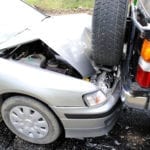
The very first car-related fatality occurred in London in 1896. Since then, millions of people around the world have died on the road, for a variety of different reasons. Although statistics vary widely from place to place, some factors remain consistent worldwide. Here are six common causes of car accidents:
- Distracted Driving: Although distracted driving has been around for decades, it shot to the top of the list with the advent of cell phones. Although fiddling with technology while trying to drive is the most obvious culprit, distracted driving is not constrained to cellphone usage. Other distractions that often cause accidents include gazing at the scenery instead of the road, trying to control children or other passengers while driving, adjusting the music, reading maps, and, most ironically, “rubbernecking” – that is, slowing down to gawk at another accident.
- Driver Fatigue: Accidents caused by fatigue are prevalent on long drives, especially between 11 pm and 8 am. If you are on a long multi-hour road trip, trading off driving responsibilities is the easiest way to avoid driver fatigue. If you are driving alone, take a break every couple of hours and have a snack. When you find that your eyelids are growing heavy, or you realize you are daydreaming and drifting off periodically, be honest with yourself. Pullover and have a nap before continuing. It’s better to get there late than not at all.
- Drunk Driving: This is one of the most dangerous causes of car accidents because it is a combination of many of the causes on the list – aggressive driving, speeding, over-confidence, and distraction – complete with the dulling effects of alcohol to top it off. Drunk drivers are erratic and difficult to avoid. The best way to bring down the statistics of drunk driving is to avoid drinking and driving yourself and to stop your friends and family members from driving after drinking. Report any suspected drunk driving you witness on the roads to the police.
- Speeding: Speeders are serious threats, mostly due to their overconfidence. They believe they are as adept at dodging around slower cars as race car drivers. Unlike race tracks, regular roads are filled with obstructions: objects, pedestrians, cyclists, and other cars driven by non-race-car drivers. When one of these is inevitably in the way, it’s easy to lose control of a vehicle while going too fast. Many head-on collisions are a result of speeding drivers losing control and ending up in oncoming traffic. Not only do they increase the chances of causing an accident, but high-speed accidents are more likely to cause fatalities.
- Aggressive Driving: Aggressive drivers are easy to pick out. They try to intimidate other drivers by tailgating, honking and veering around other vehicles, and they tend to ignore traffic signs and lights. The best way to handle an aggressive driver is to get out of their way ASAP and be safe. It is often tempting to react with anger or retribution, but this will only place you in more danger. Instead, put your energy into memorizing their license plate number as they rush by, and call the police.
- Weather: Heavy rains, wind, hail, blizzards, and fog; these conditions make for hazardous driving. The best way to avoid a collision in terrible weather is to drive at a steady pace and remain calm. This is especially important when your vision is obscured; heavy braking, especially on busy roads, can cause pile-ups. Try to drive slowly enough that you can see an obstruction ahead of you in time to avoid it. If the weather worsens, pull over as quickly and safely as you can and prepare to wait it out. Incidentally, this is the only factor on the list that isn’t caused by humans.
 Jason Baxter
Jason Baxter